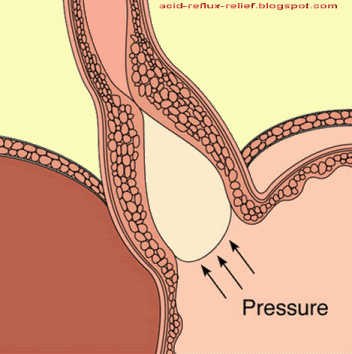What is acid reflux relief?
In medically oriented terms, antonyms of the word relief include pain, distress or damage. That links its meaning to both subjective and objective aspects. Subjective, denoting sensations experienced by the sufferer such as pain and objective, meaning physical findings detected by specialists which are either functional distress or organic damage. Actually relief is related to control measures and it quantitatively signifies removal of an unpleasant existence or reduction of its magnitude. The definition of relief, therefore encompasses alleviation of pain, relaxation of distress and healing of damage. Acid reflux on the other hand has two sides; the subjective side (symptoms) which reflects the symptom of heartburn and the objective side (signs) that reflects the functional and/or organic signs of esophageal changes. Acid reflux relief is therefore a broad term that covers all the measures used to control symptoms and signs of acid reflux disease. Normally, the lower esophageal sphincter remains closed except during swallowing. This prevents the passage of food and acid from the stomach into the esophagus. If the lower esophageal sphincter becomes weakened or relaxed, stomach acid may back up into the esophagus. Frequent acid reflux can irritate and inflame the lining of the esophagus, causing symptoms and signs of acid reflux. A better understanding of relief would thus entail knowledge of some aspects of normal structure and function, so that changes in the disease and its control could be easily considered. Actually acid reflux relief involves both preventive and curative measures, and in addition to treatment; orientation with the causes, symptoms and complications of acid reflux are essential for proper management. Acid reflux relief includes: dietary changes,lifestyle modifications, specific medications and surgical operations.Basic knowledge of the underlying causes and progression of acid reflux and answering frequently asked questions about its relief; add to the depth of understanding.
The central mechanism in acid reflux disease is disturbed acid clearance. Acid is produced in the stomach, and as long as its rate of clearance from the stomach into the small intestine is normal, it will not accumulate in the stomach and reflux into the esophagus. An example of a disorder that hinders clearance of acid from the stomach is obstruction of its outlet resulting in an increased pressure inside the stomach.
At certain circumstances during daily activities some acid may normally regurgitate from the stomach into the esophagus. Again acid clearance back into the stomach is accomplished by gravity and the esophageal propulsive movement towards the stomach. Accordingly any disturbance of esophageal motility would affect its acid clearance mechanism.
Role of the lower esophageal sphincter:
The sphincter is anatomically configured and functionally organized to act like a valve allowing one way movement of swallowed substances from the esophagus into the stomach. anatomical disturbances such as Hiatal Hernia and functional disorders as incompetence or transient relaxation would favor acid reflux.
These are the main primary factors involved in causation and are mostly electromechanical.
Secondary factors actually operate after reflux and are meant to prevent esophagitis. They are mainly chemical and include saliva and the bicarbonate content of the glandular secretions on the inner surface of the esophagus.
All these factors should be well investigated when acid reflux relief is considered.

 Mechanisms of acid reflux
Mechanisms of acid reflux
